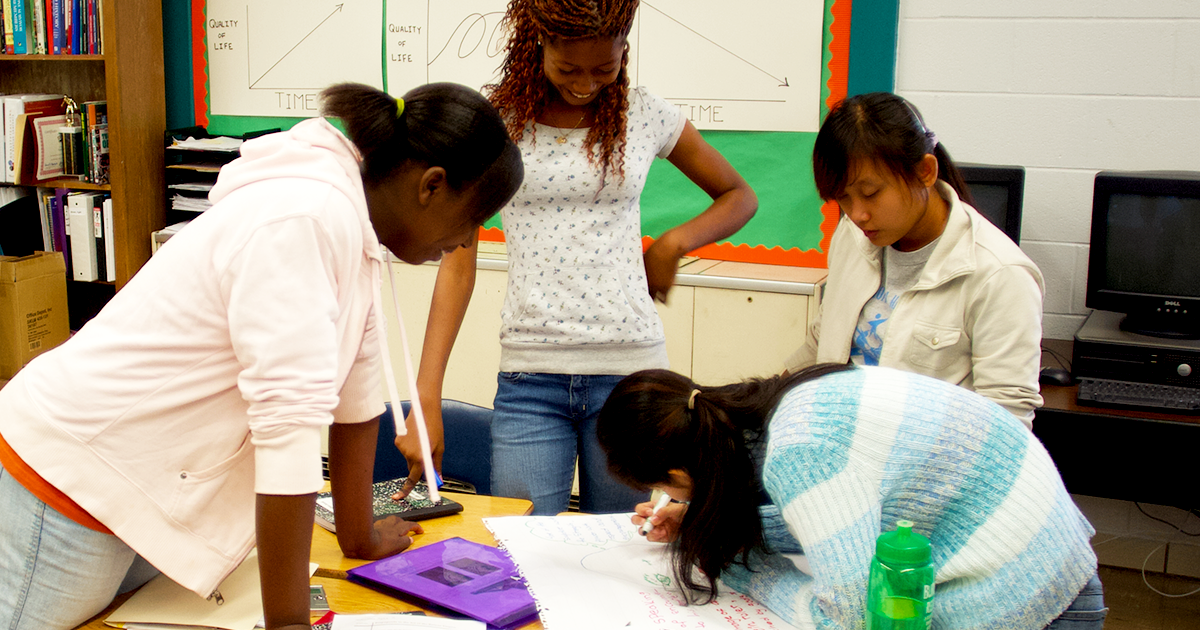Social and Emotional Learning Within Science Education
Posted on

Written by Jennifer Folsom, Lead Learning Architect for the Making Sense of SCIENCE project at WestEd.
Social-emotional well-being is an essential part of learning and life. Likewise, social and emotional learning (SEL) is an essential part of growing up and schooling. The stresses of the COVID pandemic have intensified the needs of our youth in these areas. Across the country, teachers are struggling to engage their students as we all navigate a novel post-pandemic landscape.
With the national drumbeat of accelerating learning, some districts have not deeply focused their energies on the social and emotional well-being of their students, teachers, administrators, and support staff. Of the districts that are truly prioritizing this area, some are falling victim to a common pitfall — attempting to address the issue with an add-on social-emotional learning curriculum, for example, an extra 20-30 minutes of activities that are separate from the authentic work of school. Often, these SEL interventions get skipped or feel so unconnected from “real life” that it doesn’t have the intended impact.
Science classrooms are ideal venues for students to engage in embedded social-emotional learning that is authentically essential to the tasks at hand. Today’s science classrooms are about integrating science knowledge with the practices and crosscutting concepts that guide the thinking of science. Next generation science classrooms are filled with small groups of students investigating phenomena and problems, looking for patterns, and piecing together evidence. We see groups designing prototypes and making sense of the data and observations they collected. Students challenge each other’s processes and debate their results. Sometimes their work proves their ideas correct, and other times they are left to struggle with the reality that initial intuitions aren’t always accurate. They build off each other’s questions, data sets, successes, failures, and half-baked ideas. Throughout all of this, teachers help students negotiate group dynamics so teams can collaboratively design experiments and have productive discussions.
Science classrooms like these are doing more than just getting students to learn science content, do the work of science, and look at the world through the conceptual lens scientists use. They are also home to authentic social and emotional learning led by teachers who recognize that learning collaboratively is a social and emotional pursuit. When a science teacher asks students to talk about what strengths each is going to bring to a small group charged with designing an experiment and how they will work as a team — that’s embedded social-emotional learning that promotes self-awareness and relationship skills. When a science teacher has pairs of students talk through their first attempts at using a new piece of technology — that’s embedded social-emotional learning that promotes social awareness. When a teacher guides a whole class discussion to generate the values and norms that will help them forge a culture of collaboration — that’s embedded social-emotional learning that promotes responsible decision-making.
By making these efforts transparent to students and by encouraging them to be metacognitive about their own social and emotional needs, science teachers are helping students build an awareness of the social and emotional demands of life. Not only can they help improve students’ social-emotional well-being and deepen their SEL, but they can improve their ability to be productive in a collaborative science classroom and beyond.
How might you authentically include social and emotional learning and well-being in your classroom, work with colleagues, school community, and personal life?
Making Sense of SCIENCE (MSS) is founded on the belief that high-quality professional development for teachers is critical to the success of teachers and students alike. This belief, shaped by years of research and development, informs the Making Sense of SCIENCE approach to teacher learning.
Learn more about Making Sense of SCIENCE at WestEd.
